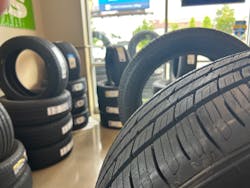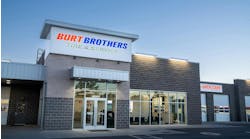At long last, tire dealers indicate retail sellout trends have turned positive after declining year-over-year the past seven consecutive months. July marks the first positive month for sellout trends since November 2022, and it’s up a healthy 3.5% year-over year.
Regionally, there were some changes. The Northwest region reported the strongest trends, up 7.5% year-over-year, while the Southwest region was the main laggard, approximately flat. This bucks recent trends, as the Southwest had been performing the strongest of any region over the prior four months.
While a month ago we described sellout levels as “becoming less bad,” it appears the marginally better industry backdrop as well as the lapping of softer comparables from a year ago worked in favor to drive positive retail trends during July.
What’s driving the turnaround? Dealer contacts continue to note the consumer auto repair deferment cycle has become more friend than foe in recent months. Despite the overall inflationary environment dragging down sales for the majority of 2023, we see sequential improvements in the rate of decline from April through June before July finally turned positive. Given this dynamic, as well as a continuation of easier comparables moving forward, we would not be surprised to see sellout levels remain on the positive side of the ledger in August.
Miles driven trends are also encouraging. Trends strengthened for a fifth consecutive month. That marks the first occurrence of five straight months of positive trends since November 2021 to March 2022. Our miles driven momentum index registered a 2.9% year-over-year increase in July, which follows healthy growth of 3.5% year-over-year in June. And early figures in August showed continued strengthening, with miles driven up 3% year-over-year in the first week of August.
Improvements also remain visible as it pertains to the materials costs to build a basic replacement tire. Those overall costs fell 18% year-over-year in July, following a 14.3% year-over-year decrease in the second quarter. We still believe these year-over-year declines are a welcome sign for both tire manufacturers and dealers, as price increases, on top of overall inflationary impacts, have been a drag on retail sellout levels for much of the year.
Combining all of these factors, we believe the tire replacement channel is beginning to see some positive tailwinds which have been largely absent thus far in 2023.
Shifting tiers continues
Dealer commentary suggests consumer demand for passenger-light truck replacement tires was again positive on a net basis compared to July 2022. Of our contacts, seven out of 10 independent tire dealers reported positive demand trends in July — a sequential step up from the net 11% in June.
Most notably, none of the independent dealers in our July survey experienced a drop demand. Thirty percent of our contacts said demand was flat.
Looking forward, dealers indicate this recent positive theme could continue as we enter fall and winter. Should weather trends worsen — and remember the historically mild winter we experienced a year ago — we may see an acceleration in the rate of consumer replacement as vehicle owners begin to pursue necessary maintenance heading into the winter season.
The movement between top-selling tiers continues, as once again in July dealers indicated tier-two brands were the most in demand by consumers, and that comes after tier-two tires were in the least demand in June. Dealers continue to highlight that the consumer deferment cycle has begun to shift positively, though trade-down continues to remain prevalent in the space.
Tier-one tire brands were the second in demand in July, after somewhat surprisingly being the top choice from consumers in June.
While dealers continue to point to consumer trade-down given the inflationary environment, we were a bit surprised to see tier-three brands take the bottom spot in July. We see this as an indication of how the current economic backdrop is impacting consumers, as certain subsets of the consumer who are less impacted by inflation continue to pay up for premium brands. Still, we note consumers seem to change their preference for certain tires in the face of current economic conditions. We’ve seen that play out in the swings in our rankings over the last few months.




